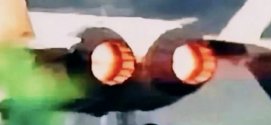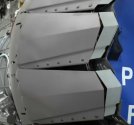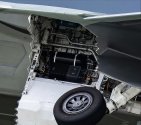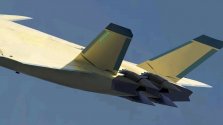China likely is losing the war if it needs J-10/J-11 to intercept cruise missiles. It's more about winning the war rather than optimizing a losing situation. You ideally don't want US cruise missiles to be within interception range of short-legged J-10s, because that means your J-20s has been pushed backwards into mainland. J-20's brings fight is thousands KM away, and push US assets outwards, outside the range of cruise missiles, obviating need for cost-effective interception to begin with. It's like a solution looking for a problem - if you already push US out of cruise missiles range, why do you need J-10/J-11 intercepting cruise missiles. (J-16 better suited anyways)
Hoping not veering too far off topic here, but I think the days of using manned aircraft to intercept cruise missiles are numbered. Interception of aerial threats close to or inside one's one airspace can be taken over by unmanned platforms by the end of this decade, eliminating the need for shorter ranged manned fighters like the J-10.
Would like to point out that the maintenance requirements for single engine aircraft like the J-10 are significantly less than the requirements for full size twinjets
Intercepting cruise missiles with cheaper aircraft with larger payloads due to not requiring internal bays is one of the many reasons the US is still buying F-15EX. Modern cruise missiles already have ranges measured in the thousands of km, and they can be launched from submarines or other platforms that J-20s will not be able to "push outwards". The idea that the J-20 or any aircraft is able to put up some imaginary non-porous net that completely prevents aircraft from launching munitions that would need interception is ridiculous.
Am late to the discussion, but I just want to add in two more points. Not exactly on the J-20, but related.
#1 - The straight-line distance between the China-North Korea-Russia tripoint and Sanya (the southernmost Chinese coastal city, excluding the 9-Dash Line in the SCS) is more than 3300 kilometers long
. This means that China's Pacific Frontier is absolutely MASSIVE, both in terms of scale and depth.
Therefore, the probability of which enemy standoff missiles would be able to get close to the Chinese coastline, if not outright crossing the coastline/border and fly directly over Chinese territory is definitely non-zero.
Hence, there's actually nothing wrong for the PLAAF and PLANAF to have J-10A/B/Cs, and J-11B(G)s to intercept enemy standoff missiles - Especially with the bulk of the more modern fighter fleets (J-16s and J-20s) doing the heavy lifting of directly fighting against the enemy aerial forces located further away from the Chinese coastline.
Moreover, we haven't even talked about the Tibetan Frontier, which isn't just similar in scale and depth to the Pacific Frontier, but also further compounded with terrain formations that can be exceptionally difficult to monitor and guard.
Furthermore, especially for facilities, installations and sites that hold critical importance to the war effort, if not the overall national security and survival of China - China would need aerial platforms that can be launched ASAP and travel fast enough to catch up and intercept enemy standoff missiles that are aimed at those locations. This can be accomplished with even the most "rearward" rearguard/reserve fighter squadrons flying J-8IIs, so there's that.
#2 - It is definitely nice to have the J-20s and J-16s to push the enemy standoff missile interception boundary outwards into the WestPac and away from the Chinese coastlines - But even those have their limits. Sooner or latter, wartime losses, wear-&-tear from intensive usages and other more crucial and/or urgent wartime demands & commitments will take significantly higher tolls on these top tier PLAAF fighters when conducting such missions.
Beyond other manned fighters in the PLAAF and PLANAF arsenal (J-11B(G), J-10A/B/C, even J-8II) - Just as
@FriedRiceNSpice said, we're definitely going to see unmanned units gradually taking over the mantle for such missions going forward.
In fact, I do see two simultaneous paths going forward for Chinese UCAVs intercepting enemy standoff missiles in the air:
1. MALE/HALE-type UCAVs (e.g. WL-2/3, CH-4/5/6, WJ-700, TB-001A) that can conduct long and ultra long-duration patrols along the Chinese coastline and/or around crucial military, civilian and national security sites that require protection while carrying AAMs. Generally slower and less agile than fighters, yet they're capable of covering greater regions of airspace, and be in better positions to conduct intercept enemy standoff missiles from the air while on their respective patrol stations.
2. Loyal wingman-type UCAVs, preferably with certain degrees of autonomous capabilities (e.g. Dark Sword, FH-97/A) that can be launched swiftly at immediate notice. They won't be capable of conducting long and ultra long-duration patrols without repeated mid-air refueling, yet they're capable to travel at high-subsonic if not supersonic speeds in order to conduct interception against enemy standoff missiles ASAP, especially when guarding highly critical facilities, installations and sites.
This may sound surprising to some, but the PLA's cross-branch, cross-domain networked CEC of today is second only to, if not outright a peer to that of the US military. Hence, the above aerial interception missions of enemy standoff missiles will certainly be conducted within the aforementioned CEC framework and environment.
Last-but-not-least, China is already well underway with the development of unmanned-unmanned mid-air refueling capability, and that's something I do highly look forward to.





